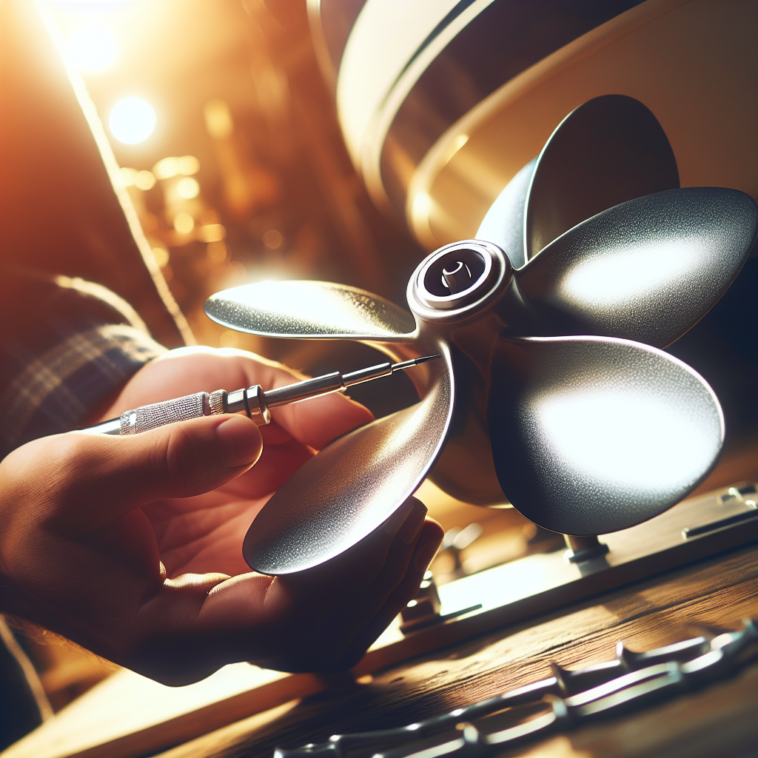So, you’ve decided to hang up your captain’s hat for the off-season and give your boat a well-deserved rest. But before you leave it to hibernate, it’s crucial to ensure you properly store your vessel to prevent any potential damage. After all, a little TLC now can save you a whole lot of headaches and money when it’s time to hit the water again. In this article, we’ll walk you through the essential steps you should take for proper boat storage during the off-season, so you can confidently tuck your boat away until it’s time to set sail once more.
Selecting a Storage Option
When it comes to storing your boat during the off-season, you have two main options: indoor storage or outdoor storage. Each option has its own advantages and considerations, so it’s important to choose the one that suits your needs best.
Indoor storage
If you have the space and budget for it, indoor boat storage is the ideal option. It provides maximum protection from the elements and offers a controlled environment, keeping your boat safe from extreme temperatures, UV rays, and other potential damage. Indoor storage facilities typically offer additional amenities such as security, insurance, and maintenance services, which can give you peace of mind during the off-season.
Outdoor storage
If indoor storage is not feasible or cost-effective for you, outdoor storage is a viable alternative. However, it’s important to carefully consider the location where you choose to store your boat. Look for a secure, well-maintained outdoor storage facility that offers some form of protection from the elements, such as covered storage or shrink-wrapping. Outdoor storage is generally more affordable, but it leaves your boat exposed to weather conditions, which can lead to damage over time.
Preparing Your Boat for Storage
Before you store your boat for the off-season, it’s crucial to properly prepare it. Following these steps will help ensure that your boat remains in good condition and is ready for use when the boating season starts again.
Clean the boat
Thoroughly clean the interior and exterior of your boat before storing it. Remove any dirt, grime, or debris that may have accumulated during the boating season. Clean the hull, deck, windows, and all surfaces to prevent the growth of mold or mildew.
Inspect for damage
Inspect your boat for any signs of damage, such as cracks, leaks, or dents. Take note of any areas that need repair and address them before storing the boat. This will prevent further deterioration and potential problems down the line.
Remove all perishables
Make sure to remove all perishable items from your boat, such as food, drinks, and any other items that may attract pests or rodents. Cleaning out the boat’s storage compartments and refrigerator is essential to avoid any unpleasant surprises when you retrieve your boat from storage.
Drain the fuel tank
To prevent fuel degradation and potential damage to the engine, it’s important to drain the fuel tank. Consult your owner’s manual or a professional for guidance on how to properly drain the fuel and dispose of it safely.
Top-up fluids
Check and top-up all fluids, such as oil, coolant, and hydraulic fluids. This will help protect various components of your boat’s engine and systems during the storage period.
Remove the battery
Disconnect and remove the boat’s battery to prevent it from draining over time. Store the battery in a cool, dry place and consider using a battery maintainer to keep it in optimal condition.
Disconnect electrical connections
To prevent any electrical issues or battery drain, disconnect and remove any electrical connections, such as electronics, lights, and speakers. This will help prolong the life of your boat’s electrical components.
Winterizing the Engine
Properly winterizing your boat’s engine is essential to protect it from freezing temperatures and corrosion during the off-season. Follow these steps to ensure that your engine remains in good condition.
Stabilize the fuel
Add a fuel stabilizer according to the manufacturer’s instructions to help prevent fuel degradation and varnish build-up. This will ensure that your fuel remains stable and ready for use when you start your engine again.
Change the oil and filter
Changing the oil and filter before storing your boat will help remove any contaminants and prevent corrosion. Follow your boat’s owner’s manual for the recommended oil type and procedures.
Fog the engine
Spraying fogging oil into the engine’s cylinders helps prevent corrosion by creating a protective coating. Follow the manufacturer’s instructions on how to properly fog your specific engine.
Flush the cooling system
Flushing the cooling system with fresh water and antifreeze will help remove salt, minerals, and other debris that can cause corrosion and blockages. Consult your boat’s owner’s manual or a professional for guidance on how to properly flush the system.
Grease fittings and moving parts
Apply marine grease to fittings and moving parts such as hinges, cables, and steering systems. This will help prevent rust and keep your boat’s components well-lubricated.
Cover the engine
Use a waterproof engine cover to protect your engine from the elements and potential damage. This will help keep your engine clean and free from debris during the storage period.
Protecting the Interior
Properly protecting and maintaining the interior of your boat is crucial for its longevity and appearance. Follow these steps to ensure that the interior remains in top condition during the off-season.
Remove upholstery
If possible, remove any upholstered cushions, seat covers, or carpets from your boat’s interior. Storing them separately will prevent them from getting damaged or worn during storage.
Clean and condition interior surfaces
Thoroughly clean all interior surfaces, including vinyl, fiberglass, and wood, using appropriate cleaning products. Once clean, apply a protective conditioner to help prevent cracking, fading, and drying out.
Use moisture absorbers
To prevent moisture-related problems such as mold or mildew, place moisture absorbers inside your boat. These can include desiccant bags or dehumidifiers, which will help keep the interior dry and free from excess humidity.
Cover the interior
Use fitted boat covers or plastic sheets to fully cover the interior of your boat. This will provide an extra layer of protection against dust, dirt, and potential damage during the off-season.
Protecting the Exterior
Properly protecting the exterior of your boat is essential to maintain its appearance and prevent damage from the elements. Follow these steps to keep your boat’s exterior in top condition.
Wash and wax the boat
Thoroughly wash your boat’s exterior to remove any dirt, salt, or grime that may have accumulated during the boating season. After washing, apply a coat of wax to provide a protective barrier against UV rays and other environmental factors.
Apply UV protectant
To further protect your boat’s exterior from the harmful effects of the sun, apply a UV protectant. This will help prevent fading, cracking, and other damage caused by prolonged exposure to UV rays.
Cover the boat
When storing your boat outdoors, use a high-quality boat cover or shrink-wrap to protect it from the elements. This will help keep your boat clean and shield it from rain, snow, and UV rays.
Maintaining the Trailer
Don’t forget to properly maintain your boat’s trailer to ensure safe and efficient towing in the future. Follow these steps to keep your trailer in top shape during the off-season.
Check tire pressure and condition
Inspect and adjust the tire pressure on your trailer. Ensure that all tires are in good condition and free from any damage or wear. This will help prevent blowouts and ensure safe towing when the boating season resumes.
Grease the wheel bearings
Properly lubricate the wheel bearings of your trailer to prevent corrosion and ensure smooth operation. Consult your trailer’s owner’s manual or a professional for guidance on how to properly grease the bearings.
Inspect lights and wiring
Check all the lights on your trailer, including brake lights, turn signals, and tail lights, to ensure they are in working order. Inspect the wiring for any damage or loose connections and make any necessary repairs.
Clean and lubricate the winch and rollers
Clean and lubricate the winch and rollers on your trailer to prevent rust and ensure smooth operation. Use appropriate lubricants and follow the manufacturer’s recommendations for maintenance.
Secure the boat to the trailer
Double-check that your boat is securely fastened to the trailer, using appropriate straps or chains. This will prevent the boat from shifting or coming loose during transport or storage.
Ensuring Proper Ventilation
Proper ventilation is essential to prevent moisture buildup and avoid potential damage to your boat. Follow these steps to ensure proper ventilation during the off-season.
Leave vents open
If your boat has vents, make sure to leave them open during storage. This will allow air to circulate and help prevent moisture buildup, reducing the risk of mold or mildew.
Place desiccant bags
Using desiccant bags or moisture-absorbing products inside your boat can help reduce humidity levels and prevent moisture-related problems. Place these bags strategically in areas prone to moisture buildup, such as storage compartments or bilges.
Install a ventilation system
Consider installing a ventilation system in your boat if it doesn’t already have one. These systems can help circulate air and remove excess moisture, ensuring a dry and well-ventilated environment.
Security Measures
Taking security measures is crucial to protect your boat from theft or vandalism during the off-season. Consider these options to enhance the security of your stored boat.
Consider a boat storage facility
If you don’t have a secure storage location at home, consider storing your boat in a dedicated boat storage facility. These facilities often offer enhanced security measures such as 24/7 surveillance, gated access, and additional insurance options.
Use a trailer lock
Securing your boat trailer with a heavy-duty lock can help deter theft and add an extra layer of protection. Look for trailer hitch locks that are compatible with your trailer’s type and size.
Install an alarm system
Consider installing an alarm system or security camera on your boat to deter potential thieves or vandals. A visible alarm system can be a strong deterrent, while a camera system can provide evidence in case of an incident.
Regular Maintenance
Even when your boat is in storage, it’s important to perform regular maintenance tasks to ensure its continued proper function. Follow these steps to maintain your boat during the off-season.
Inspect the boat periodically
Check on your boat periodically during storage to ensure that it remains in good condition. Look for any signs of damage or potential issues and address them promptly.
Start the engine
Occasionally starting the engine during storage can help prevent fuel system issues and keep the engine lubricated. Follow manufacturer guidelines for properly starting and running the engine while in storage.
Charge the battery
If you’re storing your boat for an extended period, it’s important to periodically charge the battery to maintain its charge. Use a battery maintainer or trickle charger to avoid overcharging.
Preparing for Spring
When the boating season approaches, it’s time to prepare your boat for use again. Follow these steps to ensure that your boat is ready for the water.
Perform a thorough inspection
Inspect your entire boat, both the interior and exterior, for any signs of damage or wear. Address any issues that arose during storage before taking your boat out on the water.
Replace fluids and filters
Change the oil and filters in your boat’s engine before the start of the season. This will ensure that the engine is properly lubricated and free from any contaminants.
Replace battery if necessary
If your boat’s battery no longer holds a charge or has deteriorated during storage, it’s important to replace it before the boating season begins. This will ensure that you have a reliable power source.
Reinstall upholstery and interior components
If you removed any upholstery or interior components during storage, now is the time to reinstall them. Thoroughly clean and ensure that they’re in good condition before reinstalling to maintain the appearance and comfort of your boat.
Check trailer before towing
Before towing your boat, thoroughly inspect your trailer for any damage or wear that may have occurred during storage. Ensure that the tires are properly inflated and in good condition, and that all lights and wiring are functional.
Properly storing your boat during the off-season is essential to maintain its condition and extend its lifespan. By following these comprehensive steps, you can ensure that your boat will be ready to hit the water when the boating season returns. Take the time and effort to properly prepare and protect your boat, and you’ll be rewarded with many more enjoyable years on the water.





